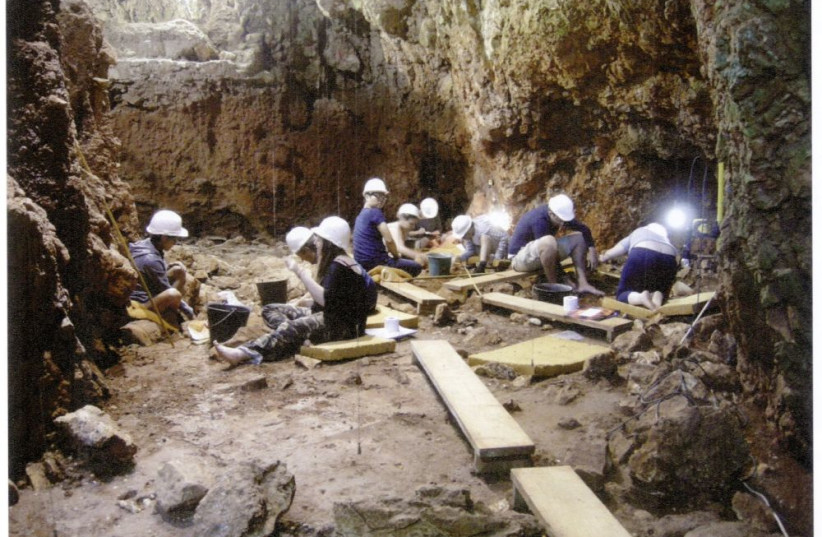Early humans some 170,000 years ago placed hearths in locations in their caves that optimized the levels of smoke, heat and living space, indicating that they had a higher cognitive level than previously known, a new Israeli study found.
The study utilized computer models of smoke and heat dispersion in order to analyze the well-researched Lower Paleolithic Lazaret Cave in France.
The study was led by PhD student Yafit Kedar and Prof. Ran Barkai from the Jacob M. Alkow Department of Archaeology and Ancient Near Eastern Cultures at Tel Aviv University, along with Dr. Gil Kedar. It was published in the peer-review journal Scientific Reports on January 27, 2022.
The team mapped the Lazaret Cave's 100sq.m. excavated area into 0.5x0.5 sq.m. squares. Out of 28 archaeological layers they chose the 25th since detailed research on artifact distribution and activity areas was available from earlier research. They then chose 16 hypothetical hearth locations and analyzed the smoke and heat dispersion using sensors placed at half-meter, meter and 1.5-meter heights and software-based models of air circulation in caves smoke dispersal simulators
The smoke density for each potential hearth was color-coded in red, yellow, green and blue based on international health standards. Red designated non-occupational areas; yellow designated areas suitable for short-duration occupation of several minutes; green designated areas suitable for longer-duration occupation of several hours a day; and blue designated areas that were nearly smoke-free and appropriate for unlimited occupation. Initial findings were that the optimal hearth in terms of smoke efficiency was at the back of the cave, far from where the hearth was actually found.

However, smoke was not the only criteria for hearth location. In order to enjoy the warmth of the fire the habitable areas (colored green and blue) needed to be within 5 meters of the hearth. This narrowed the options down to six possible locations.
But what about the size of the blue and green areas? What if one had to pass through a few meters of thick smoke in order to reach the fire? In order to judge the size of living space the researchers added another parameter. They measured the number of 0.5x0.5sq.m. squares within five meters of the fire for each of the six remaining options. After taking all three parameters into account, only two possible hearth locations remained.
Astonishingly, the actual hearth was located exactly on one of them.
"Early humans needed a balance – a hearth close to which they could work, cook, eat, sleep, get together, warm themselves, etc. while exposed to a minimum amount of smoke," said Yafit and Gil Kedar. "Ultimately, when all needs are taken into consideration – daily activities vs. the damages of smoke exposure – the occupants placed their hearth at the optimal spot in the cave."
"Our study shows that early humans were able, with no sensors or simulators, to choose the perfect location for their hearth and manage the cave's space as early as 170,000 years ago – long before the advent of modern humans in Europe," Barkai concluded. "This ability reflects ingenuity, experience, and planned action, as well as awareness of the health damage caused by smoke exposure," he said.
